UNIT3. PEOPLES OF VIETNAM (CÁC DÂN TỘC Ở VIỆT NAM)
- VOCABULARY
| New words |
Meaning |
Picture |
Example
|
Ancestor
/ˈanˌsestər/
|
ông cha, tổ tiên |
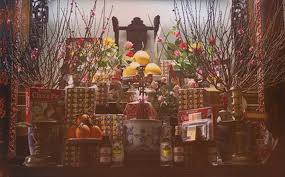 |
Our earliest ancestors lived on the Nile Delta.
Tổ tiên của chúng tôi đã sống ở đồng bằng sông Nin
|
ceremony
/ˈserəˌməni/ |
nghi lễ ,lễ kỉ niệm |
 |
The opening ceremony of the Olympic games will be held tomorrow.
Buổi lễ khai mạc của thế vận hội Olympic sẽ được tổ chức ngày mai. |
communal house
/kəˈmju:nl haus/ |
nhà cộng đồng |
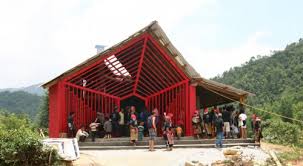 |
In some mountainous areas, people often gather in the communal house on special occasions.
Ở một số vùng núi, mọi người thường tụ họp ở nhà cộng đồng vào những dịp đặc biệt.
|
complicated
/’komplɪkeitid/ (adj) |
tinh vi, phức tạp |
 |
I couldn’t solve this complicated problem.
Tôi không thể giải quyết vấn đề phức tạp này.
|
costume
/’ kostju:m/ (n) |
trang phục |
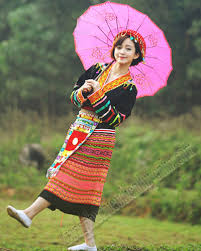 |
Ethnic minority people often wear colourful costumes.
Những người dân tộc thiểu số thường mặc trang phục nhiều màu sắc. |
| custom/ˈkʌstəm/ |
tập quán, phong tục |
 |
My country has the custom of giving presents at Christmas.
Đất nước tôi có phong tục tặng quà vào Giáng Sinh.
|
| ethnic /ˈeθnik |
(thuộc) dân tộc |
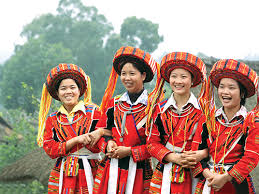 |
Vietnamese ethnic minority communities often reside in moutainous areas.
Các cộng đồng dân tộc thiểu số ở Việt Nam thường sống ở vùng núi. |
| major /ˈmeɪdʒər/ (adj) |
lớn, trọng đại, chủ yếu |
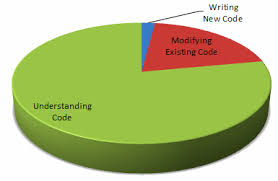 |
There have been major changes in our beliefs.
Có nhiều thay đổi lớn trong tín ngưỡng của chúng tôi.
|
| minor/ˈmaɪnər/ (adj) |
nhỏ, không quan trọng |
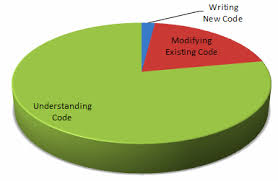 |
Women used to play a minor role in the society.
Phụ nữ đã từng có vai trò rất nhỏ trong xã hội.
|
| moutainous /ˈmauntənəs/(adj) |
có núi |
 |
Visitors are always stunned by the beauty of this moutainous area.
Khách tham quan luôn luôn bị tráng ngợp trước vẻ đẹp của vùng núi này. |
| poultry/’pəʊltri/(n) |
gia cầm |
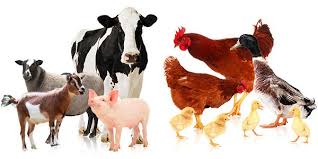 |
My family used to raise poultry on the farm.
Gia đình tôi đã từng chăn nuôi gia cầm ở trang trại.
|
| region/ ˈriʤən/ (n) |
vùng |
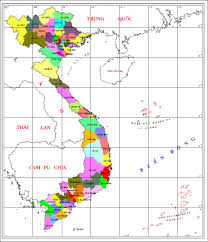 |
Ho Chi Minh Cityis in the Southeast region of Vietnam.
Thành phố Hồ Chí Minh nằm ở phía Đông Nam Việt Nam.
|
| specialty /ˈspeʃəlti/(n) |
đặc sản |
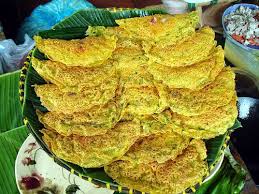 |
You should try the local specialties.
Bạn nên thử những đặc sản của địa phương.
|
| terraced field/ˈterəst fi:ld/ |
ruộng bậc thang |
 |
Tourists can see many terraced fields in Sa pa, Vietnam.
Khách du lịch có thể nhìn thấy rất nhiều ruộng bậc thang ở Sa Pa, Việt Nam |
| unique/ju’ni:k/ |
độc đáo ,độc nhất |
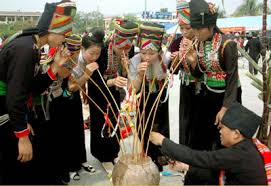 |
Every ethnic group of people has their unique customs.
Mỗi nhóm dân tộc đều có những phong tục độc đáo. |
| worship/‘wərʃip/(v) |
thờ phụng |
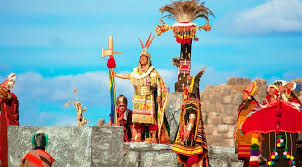 |
People used to worship Sun God in ancient times.
Con người đã từng thờ phụng thần Mặt Trời ở thời kỳ cổ đại |
- GRAMMAR.
- ÔN TẬP CÂU HỎI. (QUESTION)
Theo quy tắc ngữ pháp, khi là câu hỏi thì chúng ta cần đảo trợ động từ (auxiliray verbs) lên trước chủ ngữ
- Câu hỏi Yes/No (Yes/No Questions)
Câu hỏi dạng Yes/No Questions là dạng câu hỏi đòi hỏi câu trả lời là Yes (có) hoặc No(không).
| Cấu trúc |
Ví dụ |
Trợ động từ (be/ do/ does) + chủ ngữ (S) + động từ + ….?
Yes, S + trợ động từ/ tobe.
Hoặc
No, S + trợ động từ / tobe + not |
Isn’t Lan going to school today?
Hôm nay Lan đi học phải không?
Yes, she is. (đúng vậy)
Was Hung sick yesterday?
No, he wasn’t. (không, anh ấy không bệnh) |
- Wh-question
Trong tiếng Anh, khi chúng ta cần hỏi rõ ràng và cần có câu trả lời cụ thể, ta dùng câu hỏi với các từ để hỏi. Loại câu hỏi này được gọi là câu hỏi trực tiếp (direct questions)
- Các từ dùng để hỏi trong tiếng Anh
| Who (Ai) (chức năng chủ ngữ) |
Whom (Ai) (chức năng tân ngữ |
What (Cái gì) |
Whose (Của ai) |
| Where (Ở đâu) |
Which (cái nào) (để hỏi về sự lựa chọn) |
When (Khi nào) |
Why (Tại sao) |
| How (như thế nào) |
How much (Bao nhiêu) |
How many (Bao nhiêu, số lượng) |
How long (Bao lâu) |
| How far(Bao xa) |
How old (Bao nhiêu tuổi) |
How often (Bao nhiêu lần) |
What time (Mấy giờ) |
Các cấu trúc câu hỏi WH thường gặp
- Nếu chưa có trợ động từ thì phải mượn trợ động từ :do/ does/ did
- Nếu trợ động từ có sẵn (am/is/are/can /will/shall/would/could) thì đảo chúng ra trước chủ ngữ, không mượn do/does/did nữa.
- Cấu trúc thông thường của loại câu hỏi Wh-questions
Từ để hỏi thường được viết ở đầu câu hỏi.Từ để hỏi có thể làm chủ ngữ(subject) hay tân ngữ (object) và bổ ngữ.
| Dạng |
Cấu trúc |
Chú ý |
Dạng 1:
Câu hỏi tân ngữ |
Wh-word + auxiliary + S + V + object?
Từ để hỏi + trợ động từ + chủ ngữ + động từ chính + (tân ngữ)
Ví dụ:
Where do you live? (Anh sống ở đâu?)
What are you doing? (Ạnh đang làm gì thế?)
Whom do you meet this morning? (Anh gặp lại ai sáng nay?) (Whom là tân ngữ của động từ “meet”)
Who are you going with? (Bạn sẽ đi với ai?)
|
Object là danh từ, đại từ đứng sau động từ hoặc giới từ.
|
Dạng2:
Câu hỏi bổ ngữ |
Wh-word + tobe + S + complement?
(Từ để hỏi + động từ tobe + chủ ngữ + bổ ngữ)
Ví dụ.
Where is John? (John ở đâu?)
Who are you? (Bạn là ai?)
Whose is this umbrella? (Cái ô này của ai?)
Who is the head of your school? (Hiệu trưởng của trường anh là ai?) |
Bổ ngữ là danh từ hoặc tính từ
Động từ tobe chia theo chủ ngữ
|
Dạng3:
Câu hỏi chủ ngữ |
Wh-word + V + object?
(Từ để hỏi + động từ chính + tân ngữ)
Ví dụ.
Who lives in London with Daisy? (Ai sống ở London cùng với Daisy vậy?)
Who is opening the door? (Ai đang mở cửa đấy?)
Who teaches you English? (Ai dạy bạn Tiếng Anh?)
Which is better? (Cái/loại nào tốt hơn?)
What caused the accident? (Nguyên nhân gì đã gây ra tai nạn?) |
Động từ chính luôn được chia theo ngôi thứ 3 số ít.
|
C.Trường hợp câu hỏi đặc biệt với WHICH
| Cách dùng |
Ví dụ
|
| “Which’ được sử dụng thay thế cho What và Who khi ta muốn hỏi ai đó chính xác về người hay vật trong một số lượng nhất định. Người nghe phải chọn trong giới hạn ấy để trả lời. |
Which of you can’t do this exercise? (Em nào (trong số các em) không làm được bài tập này?)
Which way to the station,please? (Cho hỏi đường nào đi đến ga ạ?) |
B. BÀI TẬP VẬN DỤNG CƠ BẢN.
Bài 1: Khoanh tròn vào đápán đúng.
1. _________is your cat? It is two months old.
A. How old B. When C. How much
2. ______did you begin working part-time here? A. How long B. When C. How much
3. ______peoplearethere in the conference room? A. How B.Howmany C. How much
4. ______time will you spend on your new carpet? A. How long B. Howmany C. How much
5. _______do these shoes cost? A. How long B. Howmany C. How much
6. _______do you go to the gym? A. How B. Howoften C. How long
7. _____ did you get to work yesterday? I took a taxi because my car was broken. A. How B. Why C. When
8. ______were you late for work yesterday? - Becauseof the trafficjam A. How B. Why C. When
9. _____does this laptop belong to? It belongs to Jim. A. Who B. Whose C. Which
10. ______ bag was stolen yesterday? A. Who B. Whose C. Which
11. ______will you travel to this summer? I haven’t decided yet. A. Where B. What C. Who
12. _____did you sell yesterday? - Bread and cupcakes. A. What B.Who C. Which
13. ______dress did she buy?-The red or the blue one? A. What B.Whose C. Which
14. ______is playing the piano upstairs? A. Who B. Whose C. Whom
15. To ______should I address the letter? A. Who B. Whose C. Whom
Bài 2: Điền từ thích hợp để hoàn thành các câu sau.
1. ________have you give up smoking? For about two years.
2. _________place is more densely populated – Ha noi or Ho Chi Minh City?
3. _________broken Jane’s favorite vase? Her brother did it.
4. _________ does Mr. Brown do? He’s a reseacher.
5. _________ethnic groups are there in your country?
6. _________ is your grandmother? She’s ninety years old.
7. _________does your English teacher looklike? She’s young and pretty.
8. _________water should we drink every day?
9. _________did you use to go to school? I used to go on foot.
10. _________is it from here to the nearest police station?
11. ________songs is this singer performing? He is performing Trinh Cong Son’s songs.
`12. ________ was Ms Ann born? She was born in a small village.
13. ________did you have for breakfast?- Bread and eggs.
14. ________didn’t you invite Jim to the senior prom?
15. ________do they meet each other? - Almosteveryday.
Bài3. Nối câu hỏi ở cột A với câu trả lời ở cột B sao cho thích hợp.
| A |
B |
- How much did you pay for that radio?
|
- For 6 years
|
- How long have you worked as an engineer?
|
- About 6 kilomiters
|
- When did you start your career as a singer?
|
- It’s near the local park.
|
- How far is it from here to Tom’s mansion?
|
- I prefer tea.
|
- Where isthe vet’s located?
|
- 10 dollars
|
- How often do you go travelling?
|
- It’s mine
|
- Which do you prefer: tea or coffee?
|
- 6 years ago
|
- Whose luggage is it?
|
- Once or twice a year.
|
1. _____ 5.______
2. ____ 6. ______
3. _____ 7. ______
4. ____ 8. ______
Bài4. Điền một từ thích hợp vào chỗ trống để hoàn thành những câu hỏi dưới đây
1. _____you like chocolate?
2. When ________ you begin studying here? 2 years ago.
3. Which movie_________ you watch last night?
4. How far __________it from here to the town center?
5. How long ___________Ann and James been friends with each other?
6. What________ you do tomorrow? I will just lie in my bed and read books.
7. Who _________ you pick up yesterday?
8. How old__________ they?
9. How many rooms __________ there in your house?
10. Who___________ sleeping in your room?
11. ___________you found your keys? No, I haven’t found them yet.
12. _________you travel to a mountainous area last summer?
13. How often ___________Ann visit her grandmother?
14. What _________you use to do before your retirement?
15. Where________Jim going to? He is going to the library?
Bài5. Dựa vào từ cho sẵn, viết câu hỏi hoàn chỉnh
1.How many/ groups of people/ there/ in your country? ………………………………………………………………………..
2. How/your/party/ last week? ………………………………………………………………………..
3. How/ you/go/ school/ yesterday? …………………………………………………..
4. Whose/ cat/ it? …….…………………………………………………………………..
5. Jim/ learn/ Geography/ at the moment? ………………………………………………………………..
6. You/ ever/ see/ terraced fields? ………………………………………………………………..
7. What/ kind of animal/ the farmers/ raise/ in your country? ………………………………………………………………..
8. What time/ the concert/ start? ………………………………………………………………..
9. How far/ it/ from/ your house/ to the local school? ………………………………………………………………..
10. You/ come/ my birthday party/ tomorrow? ………………………………………………………………..
11. Where/ you/go/ last summer? ………………………………………………………………..
12. How much/ money/ you/spend/on clothes/ last month? ………………………………………………………………..
13. How/ ethnic people/ dress/ in special occasions? ………………………………………………………………..
14. Who/ swim/ in the swimming pool/ now? ………………………………………………………………..
15. How often/ Mr. Smith/ now/ the lawn? ………………………………………………………………..
II. Mạo từ (Articles)
- Định nghĩa
- Mạo từ là từ đứng trước danh từ và cho biết danh từ ấy đề cập đến một đối tượng xác định hay không xác định.
- Mạo từ trong tiếng Anh chỉ gồm ba từ và được phân chia như sau.
Mạo từ xác định (Dedinite article): ‘the” được dùng khi danh từ chỉ đối tượng được cả người nói và người nghe biết rõ đối tượng đó.
Mạo từ bất định (indedinite article): ‘a/an” được dùng khi người nói đề cập đến một đối tượngchung hoặc chưa xác định được.
- Cách dùng mạo từ.
| Mạo từ |
Cách dùng và vị trí |
| a |
-a đứng trước danh từ đếm được số ít.
-a đứng trước danh từ bắt đầu bằng một phụ âm (consonant) hoặc một nguyên âm (v) nhưng được phát âm như phụ âm.
Ví dụ:
A ruler (cây thước), a pencil (cây bút chì), a pig (con heo), a student (sinh viên), a one way street (đường một chiều)
-a được dùng với ý nghĩa “mỗi, bất cứ”
Ví dụ: A lion lives in the jungle.
|
| an |
- an đứng trước danh số ít.
-an đứng trước danh từ bắt đầu bằng một nguyên âm (a, e, I, o, u)
Ví dụ: an orange (quả cam), uncle (chú, cậu)
-an đứng trước một số danh từ bắt đầu bằng “h” và được đọc như nguyên âm.
Ví dụ: an hour (giờ), an honest man (người thật thà)
|
| the |
-“the’ đứng trước cả danh từ đếm được (số ít lẫn số nhiều) và danh từ không đếm được.
Ví dụ; The truth (sự thật), The time (thời gian), The bicycle (một chiếc xe đạp), The bicycles (những chiếc xe đạp).
“the” đứng trước bất cứ một danh từ nào khi người nói và người nghe đều biết về danh từ đang được nói tới hoặc được xác định rõ ràng.
Ví dụ: Their Literature teacher is old, but the English teacher is young.
Giảng viên môn Văn của họ thì già rồi nhưng giáo viên tiếng Anh thì trẻ.
“the” đứng trước một danh từ chỉ người hay vật độc nhất.
Ví dụ: the sun (mặt trời), the moon (mặt trăng)
-Trong dạng so sánh hơn nhất (superlatives) với tính từ và trạng từ.
Ví dụ:
This is the youngest student in her class.(Đây là học sinh nhỏ tuổi nhất trong lớp của cô ấy)
|
BÀI TẬP VẬN DỤNG CƠ BẢN
Bài6. Điền mạo từ ‘a” hoặc “an” trước những danh từ sau:
- _____ aunt
- _____photograph
- _____costume
- _____ custom
- _____honor
- _____ specialty
- _____hour
- _____person
- _____house
- _____region
- _____student
- _____picture
- _____uniform
- _____mountain
- _____university
- _____way
BÀI 7: Điền mạo từ ‘a’, ‘an’ hoặc 0 vào chỗ trống sao cho thích hợp.
- She asked me for ___ information about the meeting.
- They will move to ___ mansion next month.
- I’d like ___ grapefruit and ___ orange juice.
- ___award was given to Jim yesterday.
- We read ___ books and play ___ games when we have free time.
- Jim doesn’t want to borrow ___ money from anyone.
- My friend and I threw ___ party last week.
- It was ___ honor to be invited here today.
- I’ve bought ___ umbrella for my sister.
- My family often have____ eggs for breakfast.
- Would you like______cup of tea?
- My brother doesn’t like ______ cats.
- Is there __________post office here?
- I spend _________hours on my DIY project.
- Mr. Peter used to be ___________famous vet.
BÀI 8: Điền mạo từ “a”, “an” hoặc “the” vào chỗ trống sao cho phù hợp.
- We have __ cat and ____ dog, _____ cat doesn’t get on well with ___ dog.
- You can see ____ moon clearly in the Mid-Autumn festival.
- He is ____famous actor.
- My brother doesn’t like ____ present I gave him.
- Where is ____ book I lent you last week?
- My father works as ___ electrician.
- Have you ever heard about ____ River Thames?
- I want to travel around _____ world when I grow up.
- Yesterday my mother had ______terrible headache.
- Where are ____kids? They are playing outside.
- Peter is ______most hard-working student I’ve ever known.
- It is cold because_______heating systems is broken.
- Did you buy _______pair of shoes yesterday?
- _____Earth orbits around _______Sun.
- She took ______hamburger and ____apple, but she didn’t eat ____apple.
- A boy and a girlisarguing over there, I think I know _____boy.
- My grandfather sent me _____letter and ____gift but I haven’t received________letter.
- My mom is _____best mom in _____world.
- Would you like________glass of water?
- James offered me ________cup of coffee and _____piece of cake. _____cake is delicious.
BÀI 9: Đánh dấu (V) trước câu đúng, đánh dấu (X) trước câu sai và sửa lại cho đúng.
- There is an big apple in the refrigerator. _____
- It took me the hour to finish my homework. _____
- I don’t know a full name of my manager. _____
- They are most beautiful creature on earth. _____
- Mary is studying at a university in Hanoi. _____
- This is an unique custom of this ethnic group. _____
- Did you enjoy a party last night? _____
- The sun is shining brightly. _____
- No one in my family likes drinking a beer. _____
- Peter is a friend of mine. _____
BÀI TẬP TỔNG HỢP NÂNG CAO.
Bài10. Đặt câu hỏi cho phần gạch chân trong những câu trả lời sau.
- Jim has recently experienced the life of ethnic people in Vietnam. ……………………………………………………………………………..?
- The ethnic minorities in Vietnam often live in mountainous areas. ……………………………………………………………………………..?
- Their costumes are colorful and unique. ……………………………………………………………………………..?
- They often gather together at the communal house in special occasions. ……………………………………………………………………………..?
- The chief of the community often tell tales of heroes to the people at the communal house. ……………………………………………………………………………….?
- Ethnic people often hold festivals in spring. ………………………………………………………………………………?
- Life in the mountainous areas is quite difficult because of the extreme weather. ………………………………………………………………………………?
- In the remote areas, it may take people half a day to travel from their house to the market. ………………………………………………………………………………
- Shortage in electricity and fresh water supply makes life in remote areas so difficult. ………………………………………………………………………………?
- The local authorities try to help the ethnic minorities by teaching them effective farming methods. ………………………………………………………………………………?
BÀI 11: Điền mạo từ “a”, “an”, “the” hoặc 0 vào chỗ trống sao cho phù hợp.
- Farmers in my hometown earn a living by raising ____poultry.
- Some villagers play _____ flute in special occasions.
- Do you know there is _____ local folk festival tonight?
- I like _____colourful costumes of _____ethnic minority people in Vietnam.
- ______cattle are often raised in the rural areas in my country.
- When I travel to _____ foreign country, I always want to try _______local specialities first.
- Have you ever been to _________remote area?
- Ethnic minority people often gather together at __________communal house
- In Tay Nguyen, people sometimes ride ______ elephants.
- _________traditional customs of Vietnam are totally different from________customs of Western countries.
Bài 12: Dựa vào những từ cho sẵn, viết câu hoàn chỉnh.
- When/ bank/ open/ every day? …………………………………………………………………….?
- You/ have/ bread/ and/ boiled egg/ for/ breakfast? …………………………………………………………………….?
- Everyone/ enjoy/ concert/ last night? …………………………………………………………………….?
- When/ you/ start/ working/ as/ officer/ in/ this company? …………………………………………………………………….?
- How much/ money/ you/ spend/ on/ your/ last/ holiday? …………………………………………………………………….?
- What time/ sun/ often/ rise/ in/ summer? …………………………………………………………………….?
- You/ like/ cup/ of/ tea? …………………………………………………………………….?
- Train/ leave/ early/ this morning? …………………………………………………………………….?
- Who/ play/ guitar/ upstairs? …………………………………………………………………….?
- Who/ tallest/ person/ in/ your/ class? …………………………………………………………………….?
Bài 13: Khoanh vào đáp án đúng.
Elephants need help
The elephant is (1) _______ unique cultural symbol of Tay Nguyen and Dak lak is considered the land of (2) ________ elephants in Vietnam. In the past.Tay Nguyen used to have large (3) __________ of elephants living in the mountains. They helped (4) ______locals and they lived in harmony with people. However, the elephants in Tay Nguyen are in (5)_____now. In recent years, climate changes have decreased the area of natural forests.Illegal deforestation has also threaten the elephants. Besides, illegal hunting for tusks, bones and tail hair has killed many of (6) __________ animals, (7) ________can we protect the elephants? It is important that both the authorities and the local people joined hands to save the elephants from (8) ______.
- A. a B. an C. the D. 0
- A. a B. an C. the D. 0
- A. shoals B. schools C. herds D. flocks
- A. a B. an C. the D. 0
- A. safe B. guard C. danger D. protection
- A. a B. an C. the D. 0
- A. How B. What C. Who D. Why
- A. extinction B. protection C. destruction D. conservation
Bài 14: Đọc bài đọc dưới đây và trả lời câu hỏi.
NGOC LU BRONZE DRUM
Dong Son bronze drums are very famous for its cultural value. They are often used as a musical instrument in festivals and rituals. Of about 200 drums discovered, Ngoc Lu bronze drum is considered the most beautiful drum of the Dong Son culture ever found in Vietnam. It is now preserved at the National Museum of Vietnam History in Hanoi.
This drum has a large size and an ancient look with many decorative patterns. These patterns include a multi-ray star (symbolizing the shining sun) and in between the star rays are designs of stylized peacock feathers. Bands of geometrical patterns with small dots surround the star. The band of human figures presents two people pounding rice, some other standing or sitting inside the house, some beating the drum and many others dancing. In between those human patterns are the curved-roof stilted house, bronze drum, bronze bells, weapons, musical instruments and so on. The bands of animal figures include short –bill birds, the long –bill birds and deer.
The Ngoc Lu bronze drum is the most typical one in the bronze drum system of Vietnam, and at the same time it symbolizes the brilliant peak of the Dong Son culture. The drum represents the scientific knowledge and the artistic talent and mind of the ancient Viet.
- What are Dong Son bronze drums famous for? ………………………………………………………………………………
- Which bronze drum is considered the most beautiful drum of the Dong Son culture? ……………………………………………………………………………….
- Where is the Ngoc Lu bronze drum preserved now? ………………………………………………………………………………..
- What decorative patterns are in between the star rays? ……………………………………………………………………………….
- What does the band of animal figures include? ……………………………………………………………………………….
- What does the Ngoc Lu bronze drum symbolize? ………………………………………………………………………………..
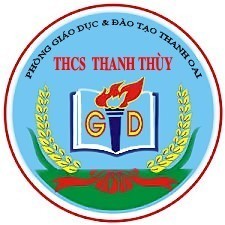
















 Video hướng dẫn cấp Phiếu lý lịch tư pháp qua ứng dụng định danh và xác thực điện tử (VNeID) trên địa bàn thành phố Hà Nội.
Video hướng dẫn cấp Phiếu lý lịch tư pháp qua ứng dụng định danh và xác thực điện tử (VNeID) trên địa bàn thành phố Hà Nội.
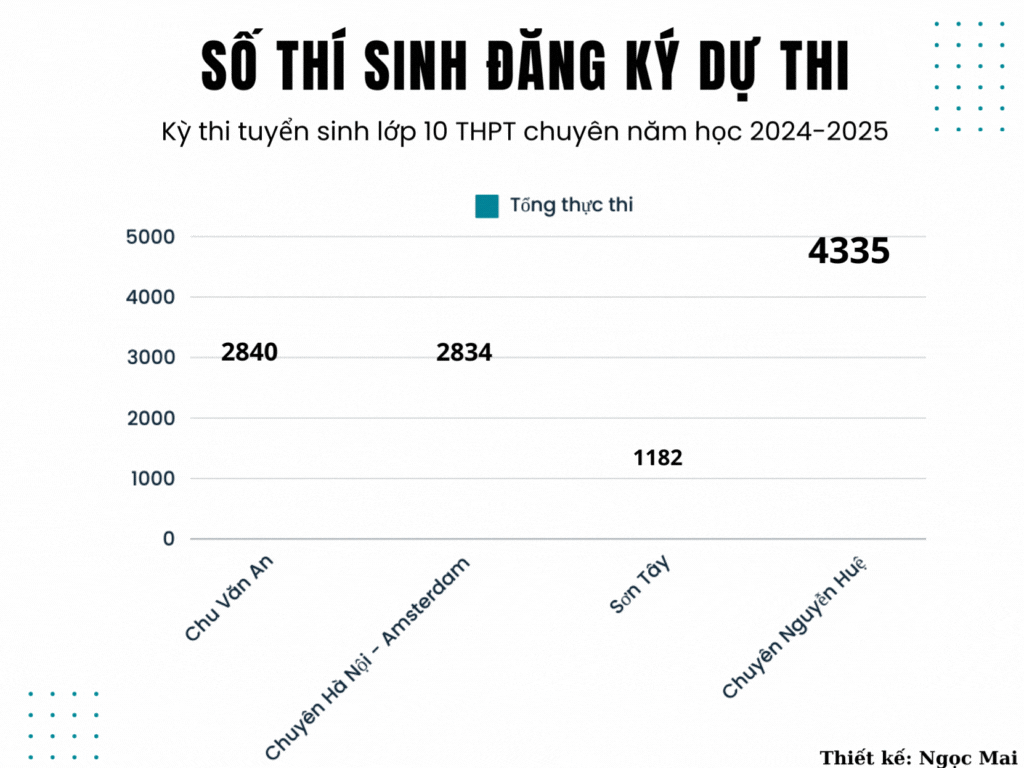 Hà Nội công bố số lượng thí sinh dự thi vào lớp 10 năm học 2024-2025
Hà Nội công bố số lượng thí sinh dự thi vào lớp 10 năm học 2024-2025
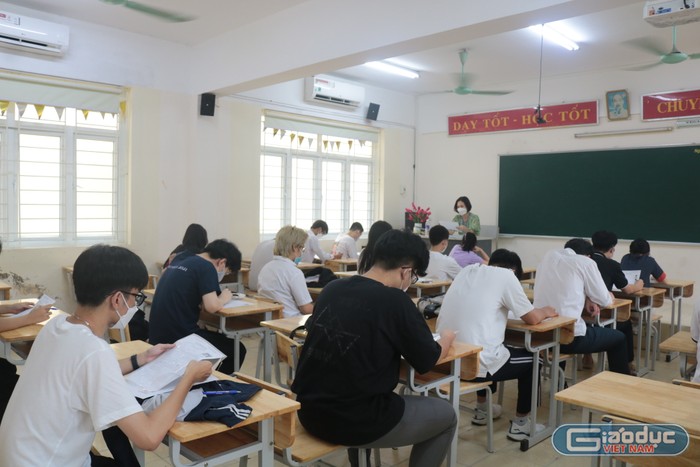 Hà Nội: Cách tính điểm xét tuyển vào 10 trường công lập năm học 2024-2025
Hà Nội: Cách tính điểm xét tuyển vào 10 trường công lập năm học 2024-2025
 Gần 750 học sinh Tiểu học Thanh Oai giao lưu Viết chữ đẹp
Gần 750 học sinh Tiểu học Thanh Oai giao lưu Viết chữ đẹp
 Hội nghị tổng kết hội thi GVG cấp học Mầm non năm học 2023 - 2024
Hội nghị tổng kết hội thi GVG cấp học Mầm non năm học 2023 - 2024